As mentioned in the introduction to this travelogue, we were always sorry that we did not visit this Tibetan township when we travelled through Yunnan Province in 2005. After all, it was only "just up the road" from our stop at the lovely city of Lijiang where we had met a Canadian couple who were travelling further west. Gary and Gwen loved Zhongdian and wrote to us later of their stay in this fascinating township.
We also planned our visit to Zhongdian so that we could spend a few relaxed days acclimatising to the altitude before travelling on to Tibet. We were well aware that as residents of a sea level village we may find the high altitudes of Zhongdian and Tibet somewhat onerous. We had read a lot about altitude sickness and the necessity to ascend as gradually as possible. We also knew all about pulmonary oedema which can result from severe latitude sickness.
Zhongdian is also known by the Chinese as "Shangri-la" (Paradise). It is of course named after the fictional Shangri-la, described in James Hilton's novel The Lost Horizon, and apparently a surprisingly successful tourism marketing tool of the Chinese government. Its Tibetan name is Gyeltang. To further complicate things, the airport is known as Deqen or Diqing. Oh yes, and there is a nearby township called Deqin. We came to get used to most cities having at least two or more names, sometimes known as their old local names and other times the Chinese version.
Sitting at an altitude of some 3,200m the township of Zhongdian certainly looked nothing like paradise as we flew in. It was a steely cold grey sky and a tortuously forbidding landscape when we flew through the jagged mountains to land at Deqen airport. Like a lot of Chinese cities we flew into, the housing development looked like something of an ugly scar on what was otherwise a very attractive and remote mountain landscape.
Although Zhongdian is not particularly high, the effects of the altitude had an immediate impact on us. Searching with my head down in my backpack for my jacket was an immediate migraine and dizzy spell. Breathlessness, fatigue, constant yawning and headaches were a common feature of altitude sickness for us. Fortunately, neither of us succumbed to anything much more uncomfortable or for that matter, of a more serious nature. The nasty part is just how scary it can be. The thought of pulmonary oedema comes to your mind very quickly.
Zhongdian is essentially a Tibetan town. It WAS the most intriguing place and despite our first bizarre impressions, we loved it. The township is set amongst huge mountains with grassland valleys grazed by yaks, sheep and small tough ponies. Even though it was the spring season when we visited, it was a formidable environment where seemingly only the toughest people, animals and vegetation could survive. Like many places in this part of the world, the entire township closes down throughout the brutal winter season.
As we were only in Zhongdian for one full day we were recommended by our CTS guide who met us at the airport to do a half day tour. We hired a driver and set off to Bita Lake (Bita Hai) some 25 km east of Zhongdian. Our driver Mr Tashi was a lovely gentle person. He was pathetically thin man who wore a shabby rust red coat with frayed shoulders. He had a delightful friendly Tibetan face and everyone seemed to like him.
He smiled a lot and obviously understood more English than he let on. We were intrigued that like a lot of Chinese and Tibetan drivers, Mr Tashi had a flash looking DVD player with a TV like monitor attached to the sun visor on his car windscreen and a mobile phone that he used non-stop. And like all of our drivers on our trips in China Mr Tashi was totally reliable and dead honest
The car trip to and from the lake was fascinating and a chance to see how people live in Zhongdian. There was certainly a feeling of prosperity with some very substantial Tibetan style houses being constructed just out of town. Tibetan houses are built practically. They are extremely robust square blocks with very small windows, substantial timber beams and housing below for animals for the winter months. Most of the larger houses had an upstairs verandah with ornate and colourful trim. They were made mostly from stone and mud with a whitewash finish that contrasted starkly against huge dark brown wooden beams, giving them a strange almost Elizabethan look.
Drying vegetables - squash, turnips and gourds - lay in abundance across the roofs of all of the farm dwellings. They were obviously fodder stored for the harsh winter months.
Conversely, houses in the grasslands were more like small cattle sheds and are used by the nomads in summer. Grazing animals are tended on the grasslands by the nomads until around December when they move onto lower and warmer grounds. The grasslands comprised some really interesting vegetation. An unusual strappy reed like plant dominated a lot of the pastureland. Growing in moist low lying meadows, we had never seen anything quite like it. Bird life was in abundance with a large variety of cranes, storks and other wetland birds.
Bita Lake itself is set in a national park and is very picturesque with extensive walking trails along the surrounding wetlands. We had to catch some rather touristy buses to travel around the large perimeter of the lake which is some 70 km. We were the only foreigners and all of the information was in Chinese. But this was no concern to us - it was nice just to be driven around where we could get our breath, sit back and take in the very pleasant surrounds.
On our trip around Bita Lake, we were a bit disturbed to see how many Chinese passengers were violently sick from the effects of altitude sickness. In fact some of the passengers were so ill we were starting to get really concerned for them. We were later told that Asian people seem to succumb to altitude sickness much more readily than Europeans. Whether this is true or not we would never know but we soon learnt why all the buses were well equipped with buckets and mops. After travelling around China, I now have a completely different view on mops. I may add that they are not particularly effective cleaning implements
In the afternoon we spent a pleasant time walking around the Old Town of Zhongdian. The markets were colourful and a lot of fun. Mouthwatering wafts of mutton kebabs sizzling over smoking coals and the smoky haze permeating the markets were wonderful memories of this intriguing city.
Trying to confirm by phone our forward flight to Lhasa, Tibet the next day was impossible. Of course our lack of language did not help either. In the end we found out that because of the tight security issues for travelers to Tibet we had to actually visit in person the China Eastern Airlines office in down town Zhongdian. This seemed to take forever and after several hours and a long walk back we were pleased to collapse back into our room at the lovely Paradise Hotel.
This hotel was really beautiful but as bizarre as most things we found in Zhongdian. It was literally a glass house in design, with beautiful foyer areas, wonderful large pools and walls just covered with hanging exotic plants and flowering creepers. Inside, the rooms were strangely dark with the very bare minimum of lighting.
In fact we couldn't use the safe as we did not have enough light to read the instructions. And the bed was bizarre too, with a large wooden platform between the two sleeping areas, making it almost impossible to climb in and out.
We must say though, the hotel was lovely and we thoroughly enjoyed the great food in the laid back cafes on the ground floor.
Two Delightful Days in Shangri-la - "Paradise"
Wednesday, October 10, 2007
 Zhongdian, Yunnan Province, China
Zhongdian, Yunnan Province, China
Other Entries
-
1From Crowdy Head to Sydney - Our Journey Begins
Oct 064 days prior Crowdy Head, Australiaphoto_camera0videocam 0comment 0
Crowdy Head, Australiaphoto_camera0videocam 0comment 0 -
2On the Eve - Our Journey to the Distant Chinas
Oct 073 days prior Sydney, Australiaphoto_camera2videocam 0comment 0
Sydney, Australiaphoto_camera2videocam 0comment 0 -
3A Brief Return to Our Favourite City of Shanghai
Oct 082 days prior Shanghai, Chinaphoto_camera5videocam 0comment 0
Shanghai, Chinaphoto_camera5videocam 0comment 0 -
4Our Journey to Zhongdian, via Kunming
Oct 091 day prior Kunming, Chinaphoto_camera2videocam 0comment 0
Kunming, Chinaphoto_camera2videocam 0comment 0 -
5Two Delightful Days in Shangri-la - "Paradise"
Oct 10 Zhongdian, Chinaphoto_camera8videocam 0comment 0
Zhongdian, Chinaphoto_camera8videocam 0comment 0 -
6Mystical Lhasa
Oct 111 day later Lhasa, Chinaphoto_camera8videocam 0comment 0
Lhasa, Chinaphoto_camera8videocam 0comment 0 -
7Friendly and Not so "Ho-Hum" Tsedang
Oct 133 days later Tsedang, Chinaphoto_camera16videocam 0comment 0
Tsedang, Chinaphoto_camera16videocam 0comment 0 -
8Rural Tibet - Our Desert Journey to Gyantse
Oct 155 days later Gyantse, Chinaphoto_camera19videocam 0comment 0
Gyantse, Chinaphoto_camera19videocam 0comment 0 -
9More of Rural Tibet - Our Trip to Shigatse
Oct 166 days later Shigatse, Chinaphoto_camera4videocam 0comment 0
Shigatse, Chinaphoto_camera4videocam 0comment 0 -
10Returning to Lhasa
Oct 188 days later Lhasa, Chinaphoto_camera4videocam 0comment 0
Lhasa, Chinaphoto_camera4videocam 0comment 0 -
11Aboard the Lhasa Express - Lhasa to Golmud
Oct 199 days later Golmud, Chinaphoto_camera18videocam 0comment 0
Golmud, Chinaphoto_camera18videocam 0comment 0 -
12Salt Pans, Altun Shan and a Taklamakan Apparition
Oct 2010 days later Dunhuang, Chinaphoto_camera6videocam 0comment 0
Dunhuang, Chinaphoto_camera6videocam 0comment 0 -
13Lovely Dunhuang - An Oasis in the Gobi Desert
Oct 2212 days later Dunhuang, Chinaphoto_camera16videocam 0comment 0
Dunhuang, Chinaphoto_camera16videocam 0comment 0 -
14Frenetic Liuyuan and our Rail Trip to Turpan
Oct 2313 days later Turpan, Chinaphoto_camera0videocam 0comment 0
Turpan, Chinaphoto_camera0videocam 0comment 0 -
15Toward Turpan - Our Welcome to Xinjiang Province!
Oct 2414 days later Turpan, Chinaphoto_camera2videocam 0comment 0
Turpan, Chinaphoto_camera2videocam 0comment 0 -
16Tales of Turpan - Second Lowest Basin in the World
Oct 2414 days later Turpan, Chinaphoto_camera11videocam 0comment 0
Turpan, Chinaphoto_camera11videocam 0comment 0 -
17Exotic Urumqi - As Far From the Sea as You Can Be
Oct 2616 days later Ürümqi, Chinaphoto_camera7videocam 0comment 0
Ürümqi, Chinaphoto_camera7videocam 0comment 0 -
18Twenty Three Hours to Kashgar by Rail
Oct 2818 days later Kashgar, Chinaphoto_camera0videocam 0comment 0
Kashgar, Chinaphoto_camera0videocam 0comment 0 -
19Our Introduction to the Frontier City of Kashgar
Oct 2919 days later Kashgar, Chinaphoto_camera4videocam 0comment 0
Kashgar, Chinaphoto_camera4videocam 0comment 0 -
20A Driver Called Mukhtar - Travels to Tashkorgan
Oct 3020 days later Tashkorgan, Chinaphoto_camera14videocam 0comment 0
Tashkorgan, Chinaphoto_camera14videocam 0comment 0 -
21Kashgar Old City, More Carpets and Abdul Karim
Oct 3121 days later Kashgar, Chinaphoto_camera7videocam 0comment 0
Kashgar, Chinaphoto_camera7videocam 0comment 0 -
22On the Home Run - From Kashgar Back to Urumqi
Nov 0223 days later Ürümqi, Chinaphoto_camera4videocam 0comment 0
Ürümqi, Chinaphoto_camera4videocam 0comment 0 -
23From Urumqi to Shanghai, Sydney and Home
Nov 0425 days later Shanghai, Chinaphoto_camera1videocam 0comment 0
Shanghai, Chinaphoto_camera1videocam 0comment 0

 Zhongdian, Yunnan Province, China
Zhongdian, Yunnan Province, China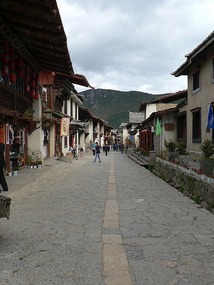
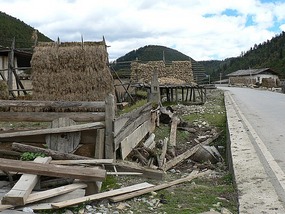
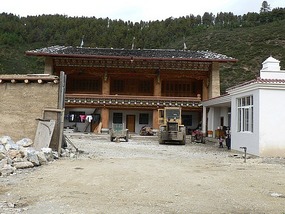
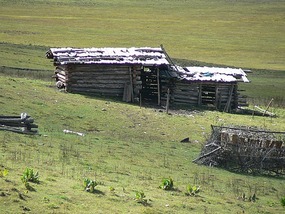
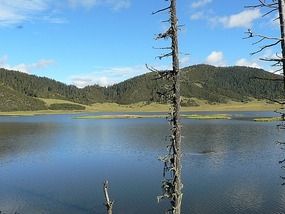
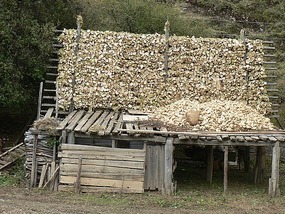
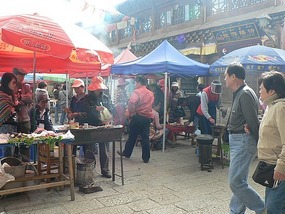
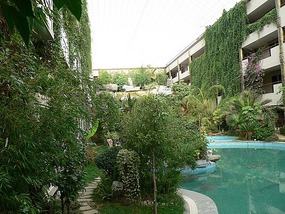


2025-05-23